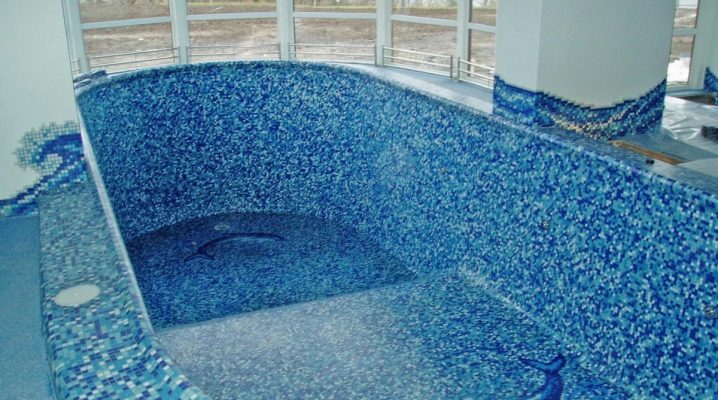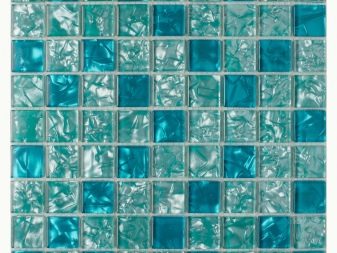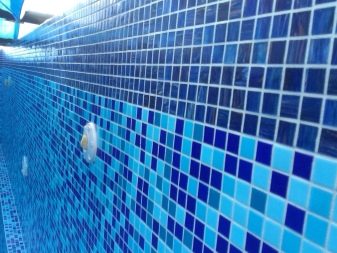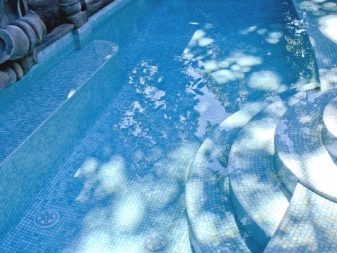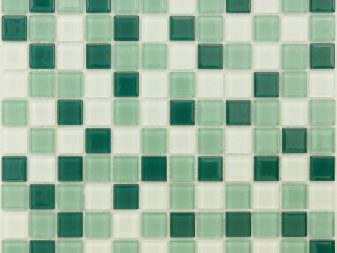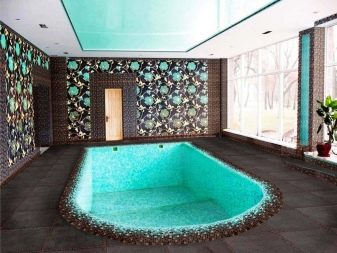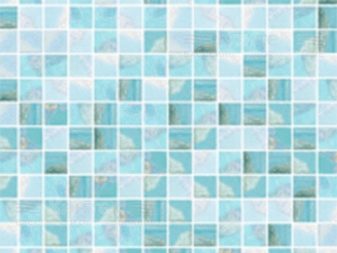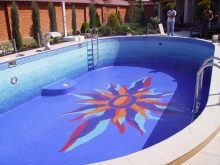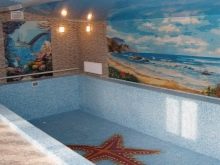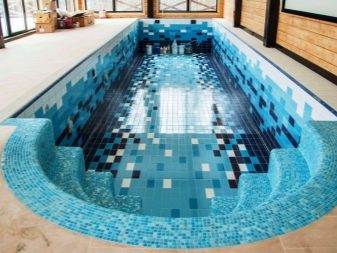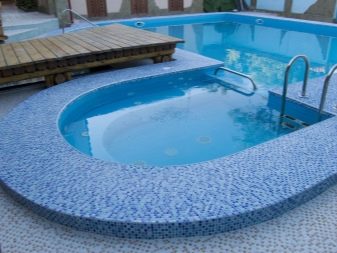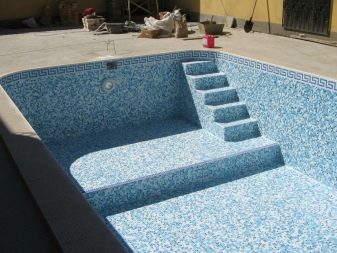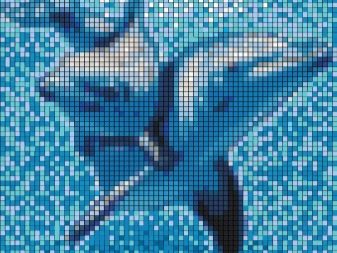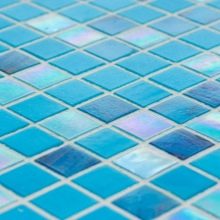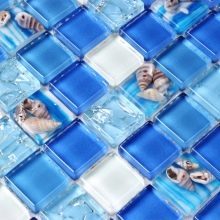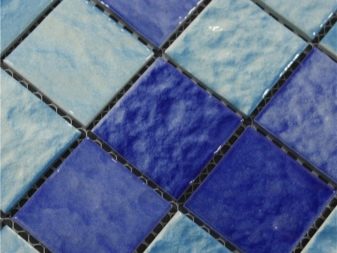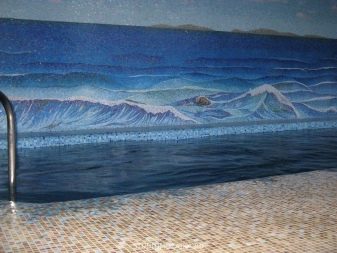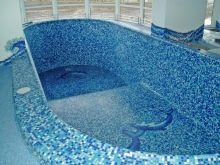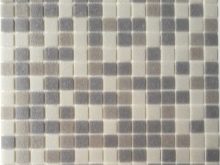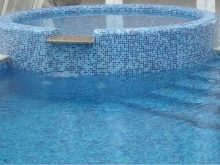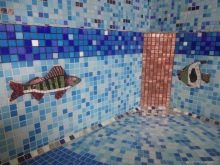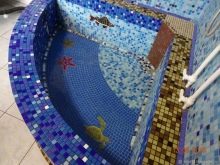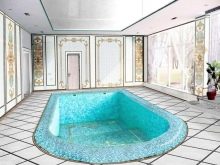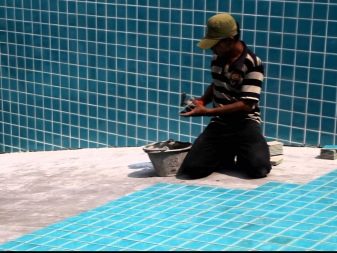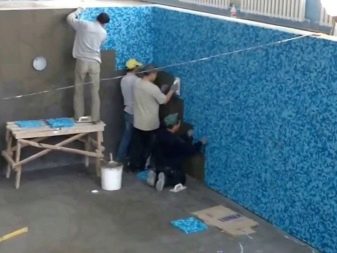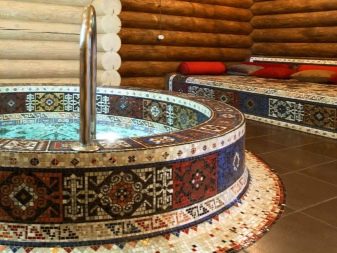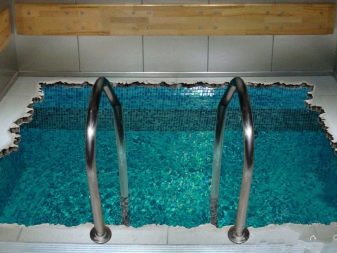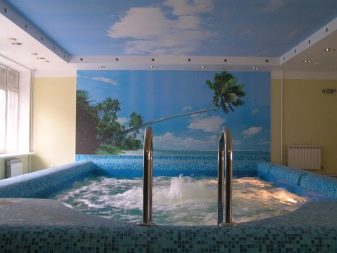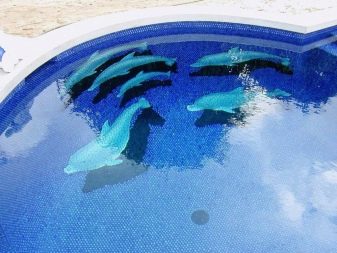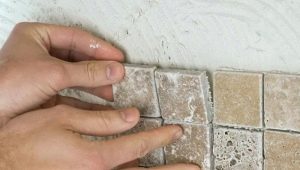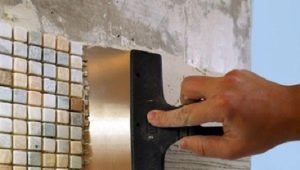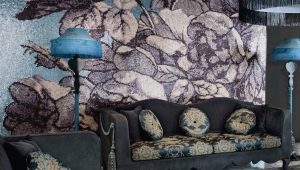Mosaic for the pool: features and design ideas
Perhaps you did not know that ordinary tile is not designed for long contact with water, as water gradually destroys the insulation and foundation of the structure. Yes, and from the mold of such tiles will not be protected. Therefore, for surfaces such as swimming pools, there is a special type of finishing material - mosaic tiles.
According to customer reviews on the Internet, Italian and Spanish trademarks are considered to be the most conscientious and popular manufacturers of pool tiles: Trend, Vitrex, Aquileia, Bisazza and Vidrepur.
But also in the ceramic market there is a more affordable, but no less high-quality product of domestic production and many budget options from China.
Specifications
The main feature and advantage of a miniature mosaic is that it can veneer even curvilinear surfaces and hard-to-reach places, while creating original and unique patterns.
An important indicator for tiles used in swimming pools is the water absorption coefficient.It should not exceed 6%. This is a guarantee of durability of the finishing material so that over time it will not become brittle. In addition, high-quality tile should be resistant to bleach and other chemical agents.
Serious manufacturers offer high impact versions that are resistant to temperature extremes and exposure to sunlight.
According to the type of sliding tiles for the pool is divided into several types: for dry rooms (class A), for showers and sides (class B), but the best anti-slip index for type C is such a finishing material suitable for decorating steps and slopes under water.
Kinds
Among the types of tiles for the pool are the most common: glass, porcelain and clinker.
Glass mosaic has the following advantages:
- water absorption of this finishing material is minimal (even if damaged, it does not accumulate moisture);
- glass is durable and withstands temperature drops from -30 to +145 С, which is especially important for open structures;
- high resistance to various types of chemicals and acids, which contributes to the preservation of brightness for a long time;
- interesting optical effects due to the refraction of light.
Glass mosaic is usually small square in shape.
To make the installation process go faster, you can glue the tiles onto a special grid of 60 * 60 cm using tile adhesive and apply waterproof grouting.
Porcelain tile for the pool is particularly durable, since it is burned at 1200-1300 C. This finishing material is made of white clay, kaolin, quartz and feldspar. Porcelain specimens have a vitreous surface and do not need additional glazing.
The clinker tile, in contrast to ordinary tile, does not slip and is distinguished by hanging strength, so it is used for cladding high-traffic areas. The clinker is produced by pressing and fired at a temperature of 1200 C, and the water absorption coefficient of this finishing material is 0.5%. A specific feature of clinker is the presence of rather large formats.
It can be purchased for cladding format 30 * 30 cm, while the coating can be either glazed or unglazed. The first option is smooth and suitable for lining the pool.A floor is better to issue unglazed clinker, which does not slip.
Decor
For decorating the bowl design is better to prefer ceramics, and for the surface fit glass tile. And do not forget to plan a place for a beautiful mural - this technique is most often used to design the bottom. To do this, you can combine several finishing materials.
Choosing a coloring of a mosaic tile, give preference to light shades. This is not only pleasing to the eye, but also practical: pollution can always be seen and cleaned on time, while on a dark mosaic you may not see dirt, and this is not entirely hygienic.
The surface of a ceramic mosaic can be smooth or rough, glossy or matte, as well as embossed. As for the sizes, the following mini-tiles are considered standard: 15x15 mm, 20x20 mm, 30x30 mm, 50x50 mm or 100x100 mm. And larger projects are feasible on a special 30x30 cm grid.
Nuances of finishing
It is better to start facing with mosaic 5 days after the execution of waterproofing works and applying plaster. Tile or grid with mosaic squares laid on a special glue.Finishing begins with walls in the form of horizontal rows. If in the design of the bowl or the bottom of the pool there is a certain pattern, panel or symmetrical ornament, then it is worth starting laying from the middle of the row.
Filling the joints with the mortar should be done after laying a row and half the thickness of the tile, since after it it will settle to the required level. Grout must be frost resistant and moisture resistant. Pay special attention to laying the mosaic bottom, which is performed at the corners of the triangle. If the drain hole is in the center of the pool, then the bottom is conventionally divided into 4 triangles, and the lining focuses on these geometric proportions.
For grouting, formulations based on epoxy resins are selected.
Design
The original ornament in the form of a mosaic for a pool bowl will radically transform its style. The classic of the genre is the marine theme: blue, blue, green and turquoise shades - in general, everything that reminds us of the sea. No wonder even invented such a shade as "aquamarine" - a cross between blue and green. You can create a visual play of such shades, emphasizing the depth of individual zones in a darker color.As an imitation of the seabed, it is worth using compositions in the form of corals, fish, starfish and algae.
If you want uncommonness and creativity - pay attention to the bright colors, which will certainly lift your spirits and remind you of summer and sunny days: orange, red, yellow, brown, sandy. Floral motifs or images of fluttering butterflies will complement such a cheerful design.
Laying the mosaic can be done as a classic "chess" method, and in the form of stripes, circles and other geometric shapes. Particularly impressive is the richly colored mosaic in the form of an oriental ornament. Difficult to implement, but a very original idea of facing the pool - a mosaic pattern in 3D at the bottom. This is possible due to the experiments of designers with mosaic tiles of different brightness.
You can repeat the same ornament on the bottom of the pool and on the wall, using a similar theme in the edging.
By engaging one of the walls and the bottom, you can make a bright accent both under water and above it. It is enough to sketch a sketch of the pattern or ornament you need, and the pool finishing specialists will bring to life any idea of the customer.
Conclusion
Perhaps some will say that the lining of the pool with ordinary tiles is much easier to implement and more practical. After all, not everyone wants to mess with a small mosaic, and if necessary - to restore the panel in pieces. Yes, and for the price of a mosaic loses.
Of course, mosaic is not an option for everyone, but for creative people who disagree on something ordinary and enjoy the creative process. In addition, such a colorful and unusual pool will surely not only cheer you up and inspire you to new life feats.
The master class on facing the pool mosaic, see the following video.
